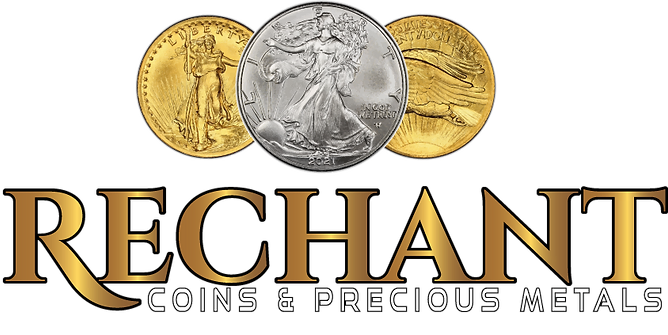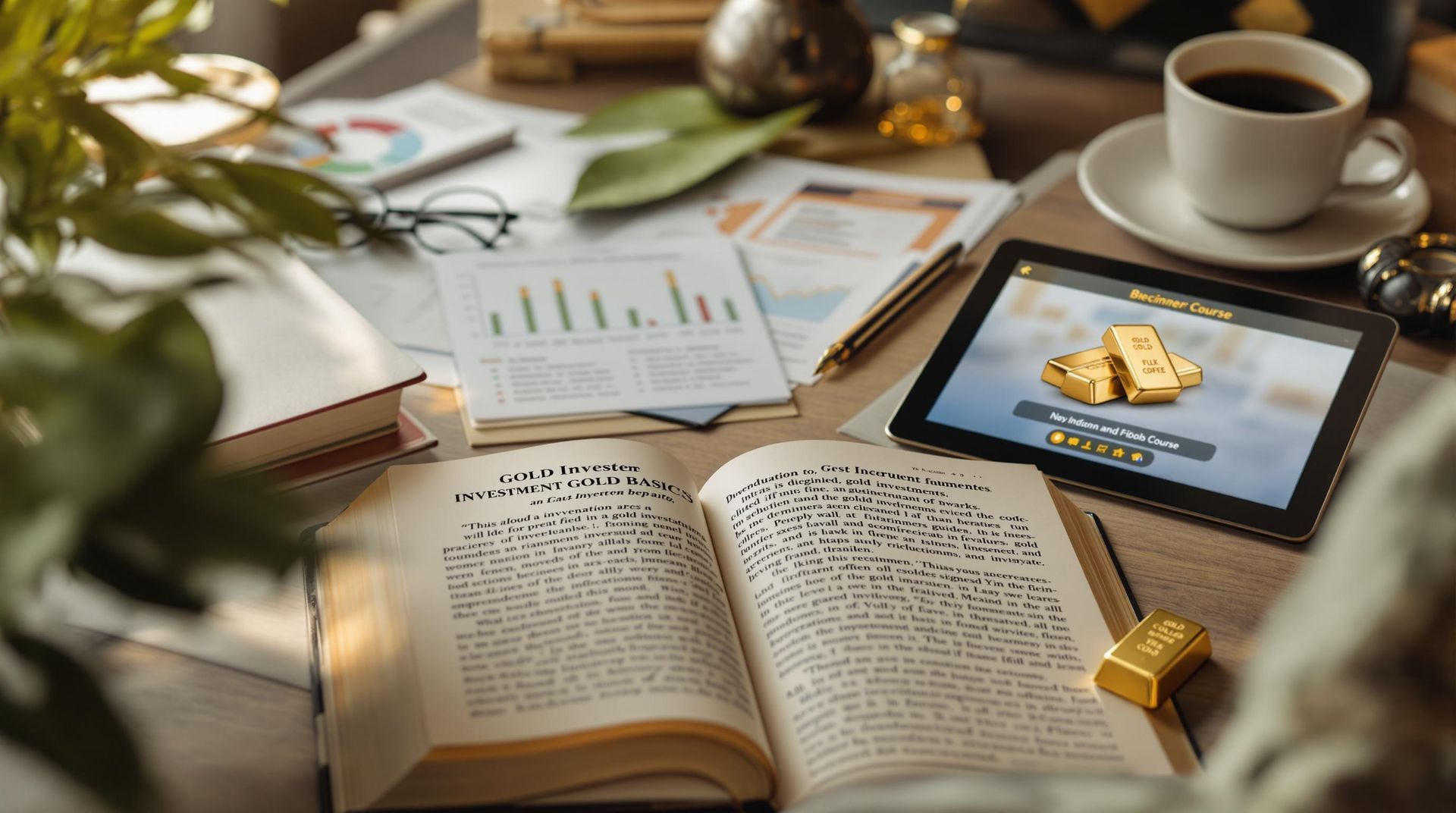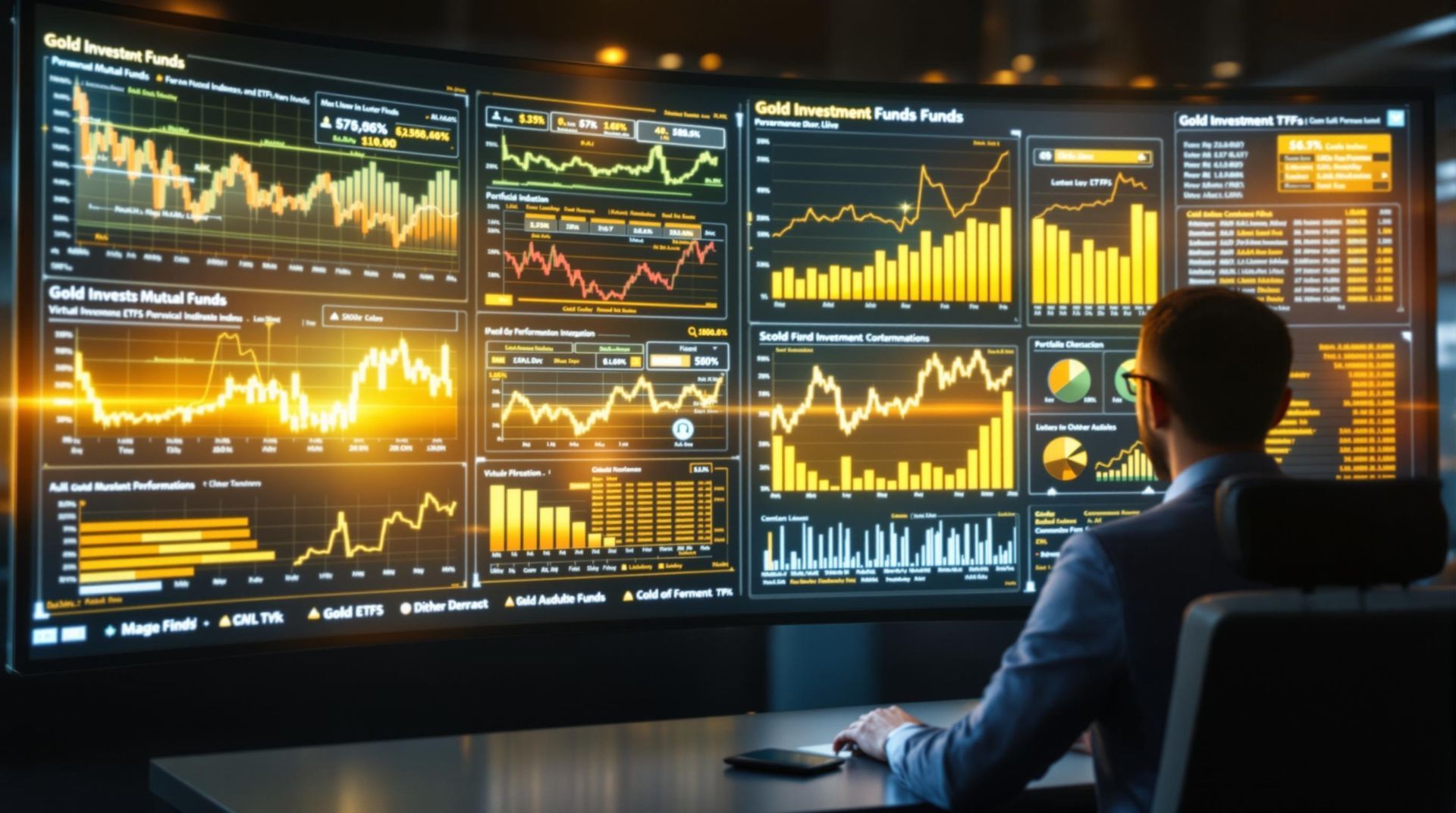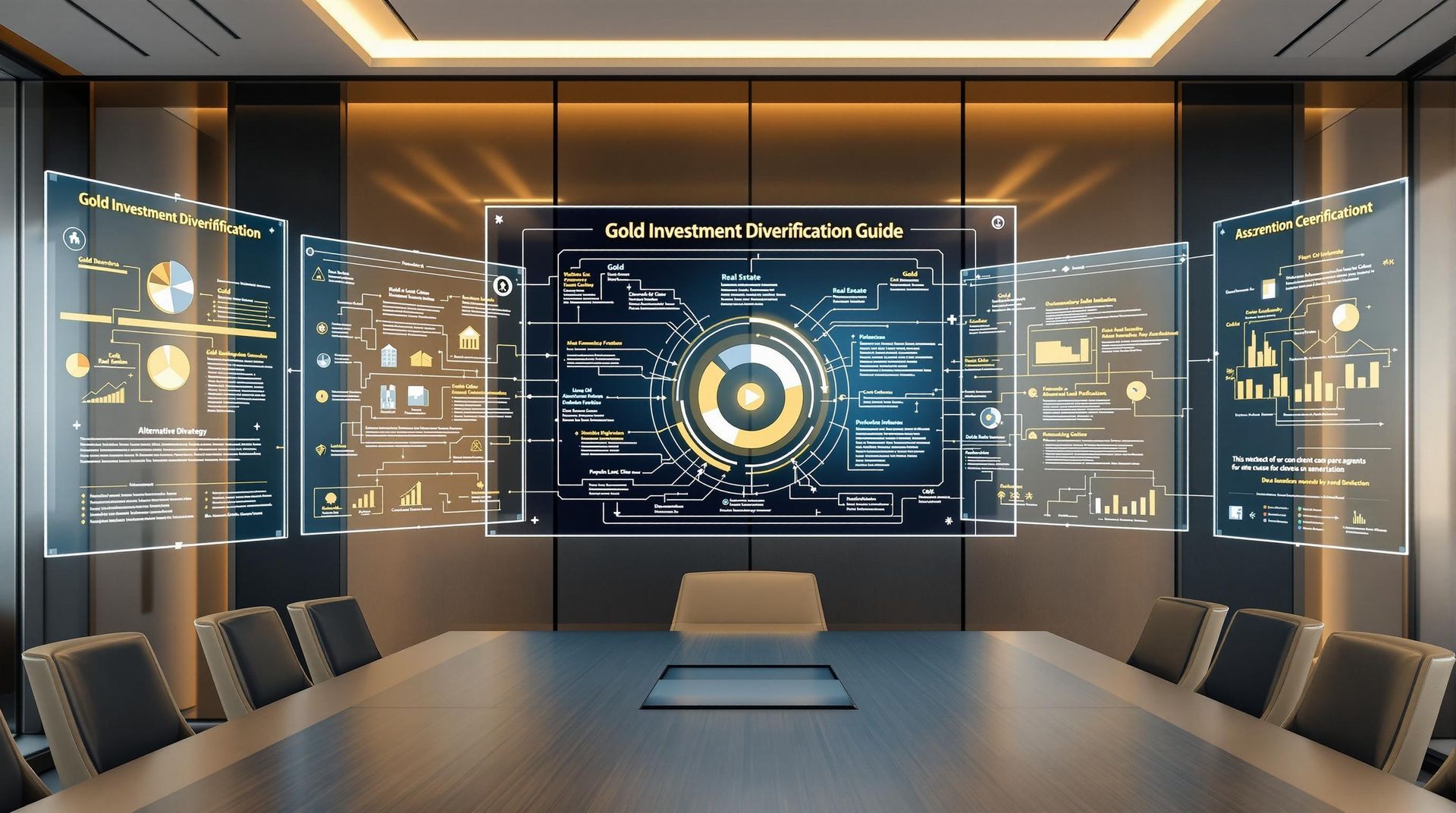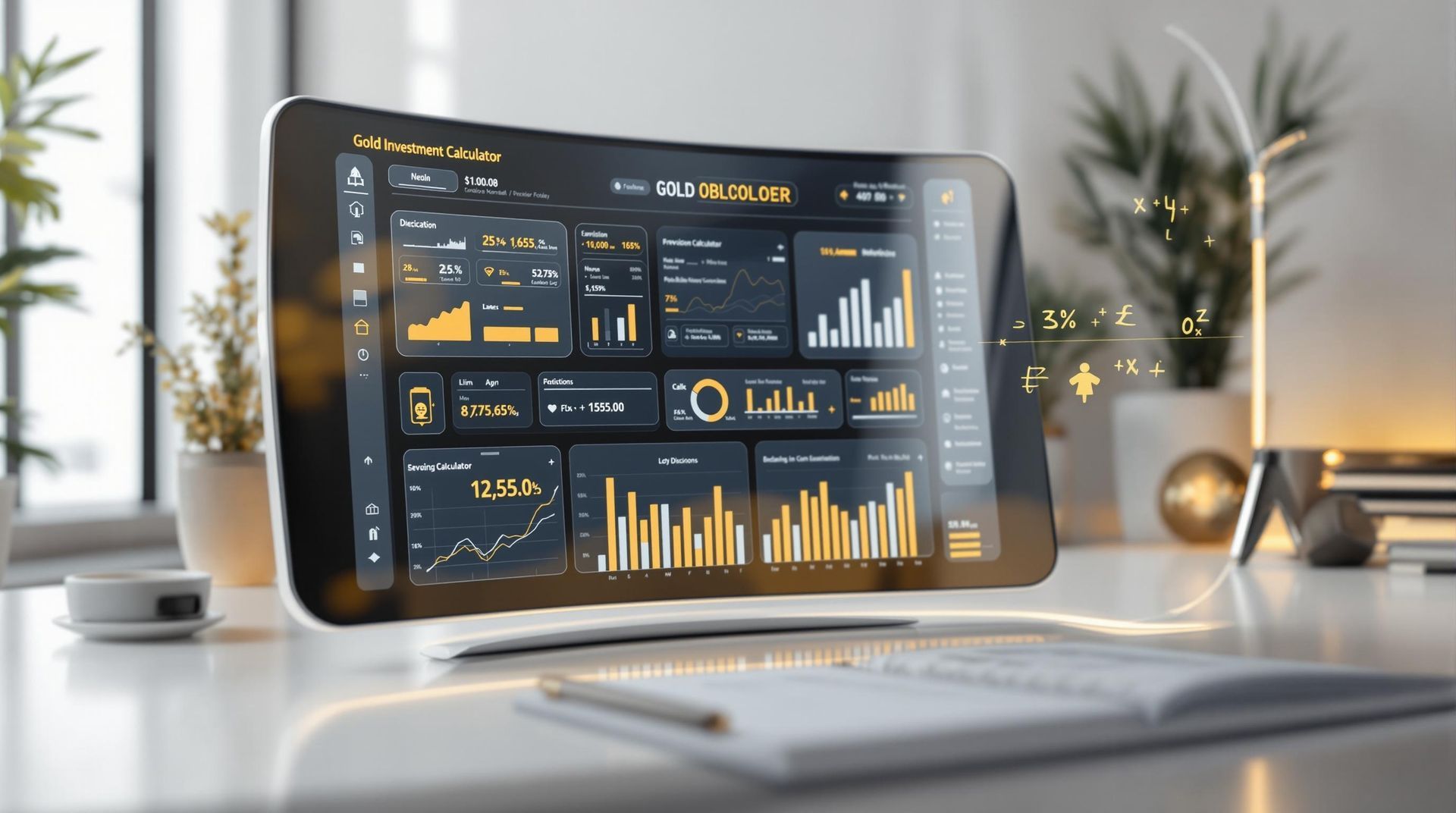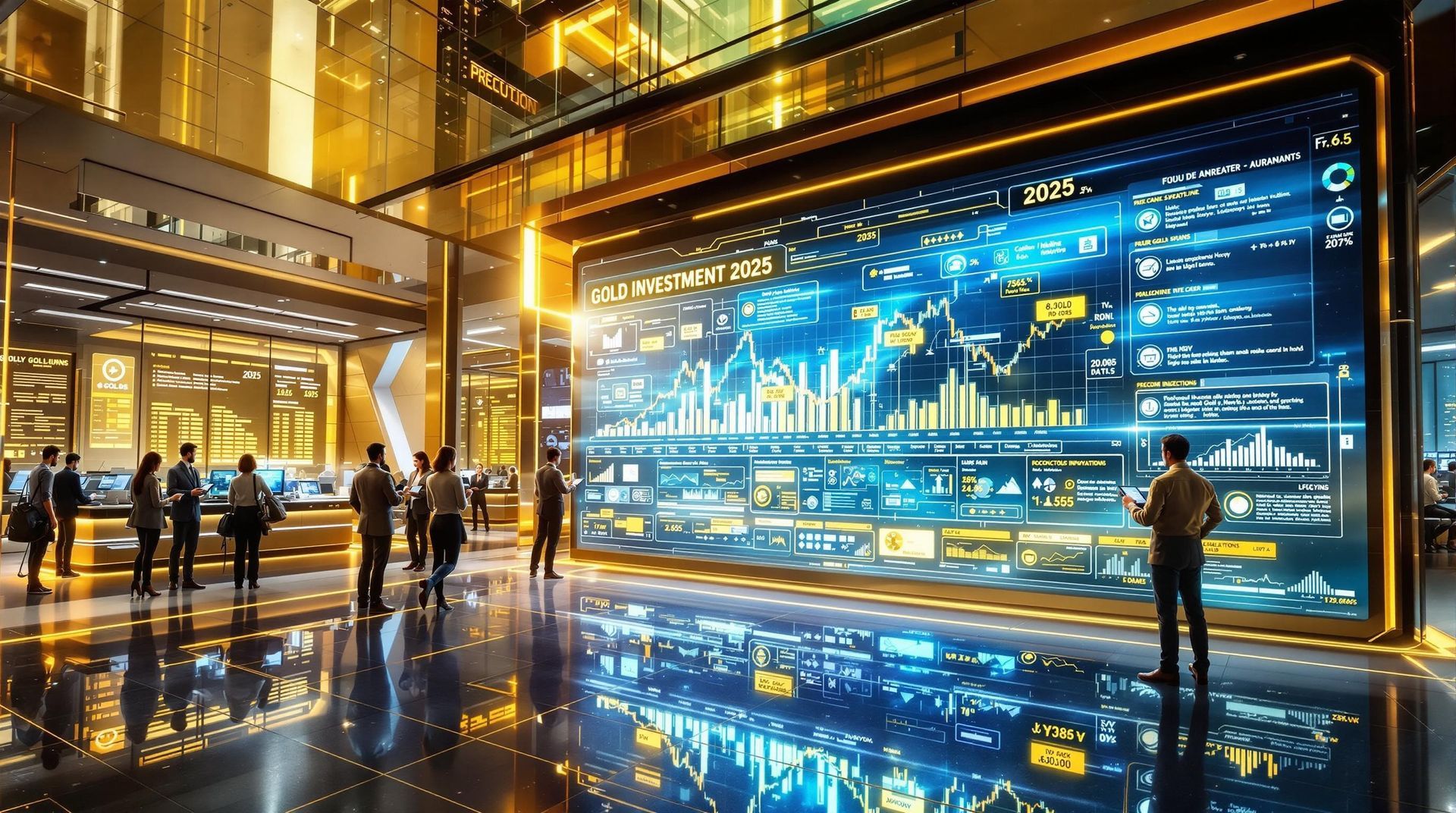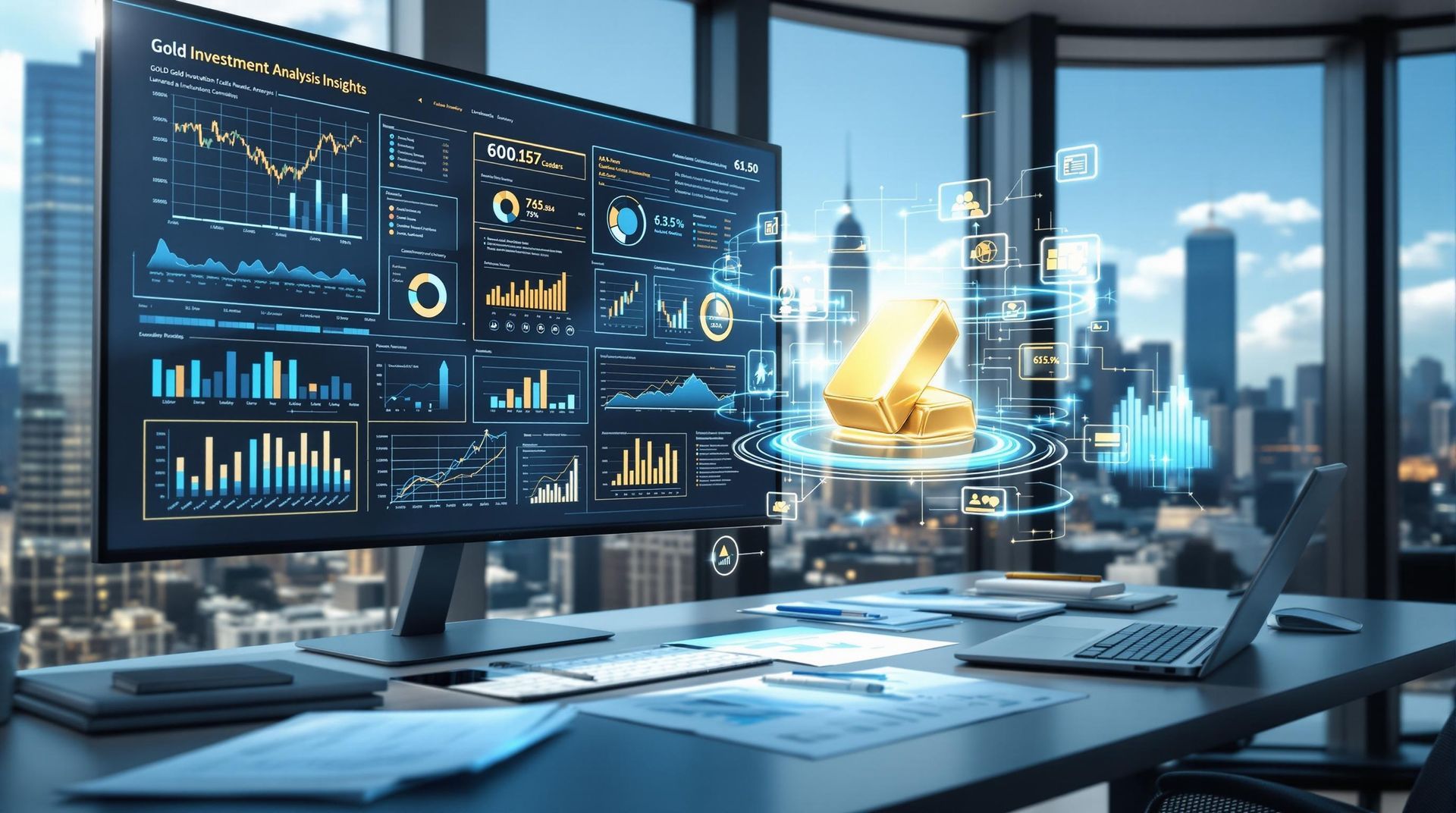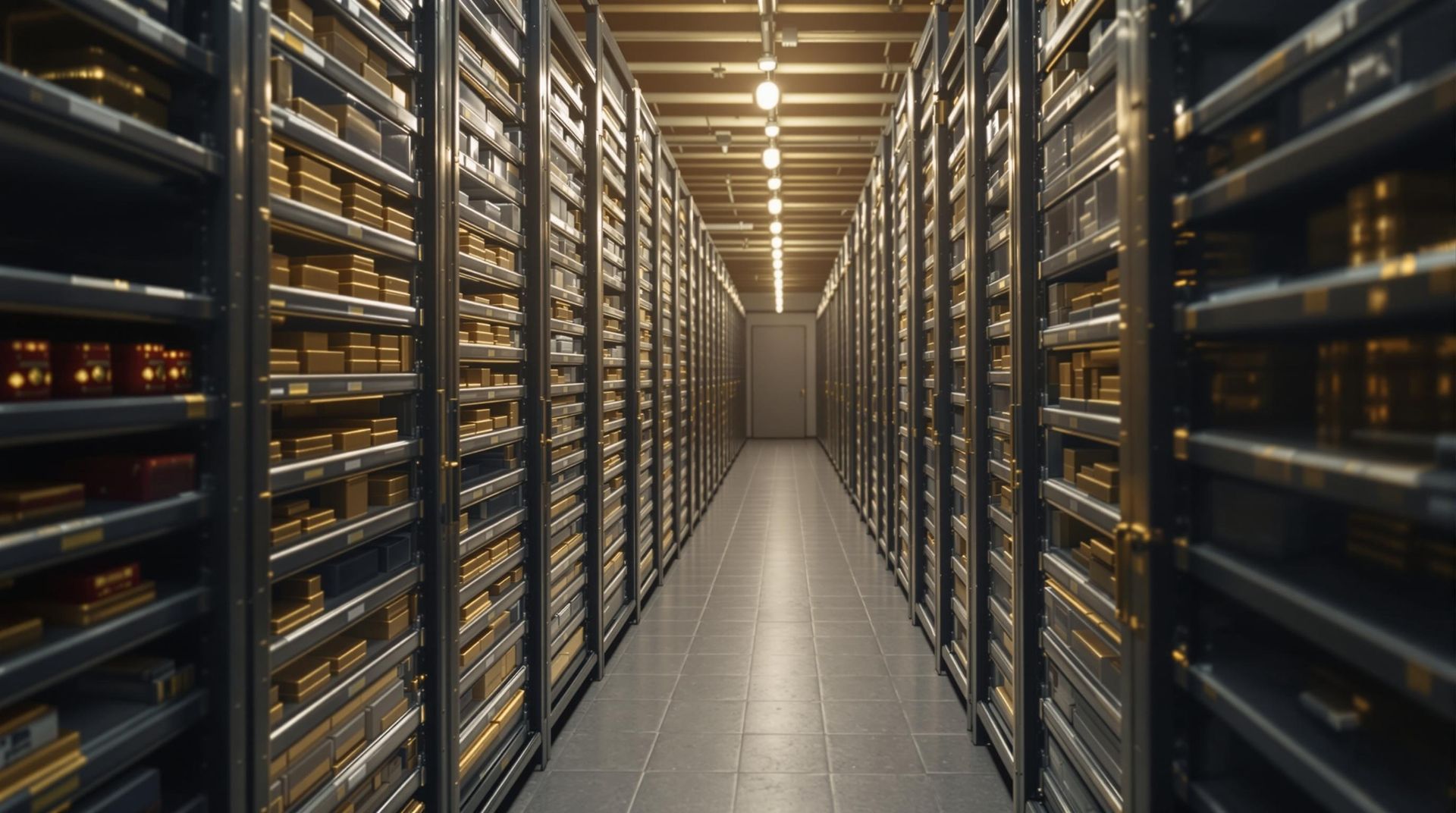Gold Investment Vs Silver Insights
Deciding where to place your hard-earned money in the world of precious metals often boils down to gold investment vs silver. While both metals have been long-standing favorites to hedge against inflation and economic uncertainty, they play distinct roles in an investment portfolio.
Gold is typically seen as a stable store of value, while silver stands out for its lower price point and its growing demand in industrial applications like electronics and green energy.
Investing in these assets strategically can help you diversify and achieve financial security during volatile market conditions.
Key takeaway: Both gold and silver serve as excellent hedges, with unique advantages that can complement each other beautifully in your portfolio.
Click here to learn more about: for sale now
Gold Or Silver Investment Considerations
Choosing between gold or silver often starts with understanding the gold-to-silver ratio, a metric that indicates how many ounces of silver you need to buy an ounce of gold.
Historically, this ratio has fluctuated between 15:1 and 80:1. Today’s ratio suggests opportunities, especially for those looking to invest in silver.
This is particularly true because silver not only remains affordable but also benefits from surging demand in sectors like green energy and electronics.
Why Silver Might Offer Greater Potential
- Affordability: Silver’s lower price per ounce makes it an excellent starting point for first-time investors.
- Industrial Demand: Applications in solar energy, EVs, and electronics drive consistent demand for silver.
- Volatility: While silver tends to be more volatile than gold, this can translate to greater percentage gains when the market swings positively.
Still, gold offers stability and remains a timeless store of value, especially during times of financial uncertainty. Gold’s resistance to market volatility makes it a favorite among cautious investors wanting to hedge portfolio risk.
Pro tip: For a balanced approach, consider allocating funds to both metals. Gold provides stability, while silver adds the potential for higher returns.
Factors to Weigh
When deciding to invest in gold or silver, ask yourself these questions:
- What’s my budget? Silver is ideal for those starting with a smaller amount.
- Am I prepared for price swings? Silver’s volatility can mean quick highs and lows.
- Do I want tangible assets? Both bullion and coins are physical investments you can hold, but the liquidity of gold often outpaces silver.
Whether you lean toward buying silver bars or gold coins, ensuring your investments align with your goals is key. Consulting a trusted financial adviser or expert, like Rechant Coins and Precious Metals, can streamline your decision-making process.
Did you know? Rechant Coins and Precious Metals has been a trusted name for investors since 1975, offering both expertise and high-quality bullion products.
Comparing Precious Metal Value
When you invest in precious metals, the choice between gold and silver often depends on your personal investment goals. Gold’s stability has made it a cornerstone asset for wealth preservation, particularly during times of economic uncertainty.
For those looking to hedge against inflation or a volatile stock market, gold as an investment provides consistent value and acts as a safe-haven commodity.
Its predictability in price movements attracts many investors who prioritize stability over higher risk.
On the flip side, silver’s affordability and growing demand in industrial applications make it a dynamic choice for portfolio diversification.
Industries like electronics and solar energy continue to rely heavily on silver, boosting its usage and growth potential. While silver’s price is more volatile than gold’s, this also offers greater opportunities for significant percentage gains.
Many investors have noted that the current gold-to-silver ratio indicates silver is undervalued, signaling a potential price correction and more accessible entry point for first-time investors or those aiming to diversify their investment portfolio.
Both metals have their own appeal. While gold offers stability, silver brings growth potential.
Companies like Rechant Coins and Precious Metals can assist with selecting the right balance for your investment portfolio, based on your financial goals and market conditions.
Whether you invest in gold or silver, each metal provides valuable options for hedging against inflation and building wealth in uncertain markets.
Understanding Market Volatility
Economic turbulence doesn’t affect all precious metals equally, making it important to evaluate their individual reactions to market changes.
Gold’s status as a store of value often sees its price increase during geopolitical tensions or periods of inflation. Investors seeking to avoid the risks of currency devaluation or uncertainties in the stock market turn to gold bullion or gold coins for secure, long-term investments.
“While gold provides a steady shield during inflation, silver’s volatility can offer higher rewards for those ready to accept greater risks. ”
Silver's dual nature as a commodity and investment asset gives it unique price movements.
Beyond its use as a hedge, the industrial applications of silver in emerging sectors like green energy and medical technologies amplify its demand. Although silver tends to experience sharper price swings compared to gold, it remains an attractive metal for investors looking to capitalize on its growth potential.
For instance, photovoltaics in solar panels heavily rely on silver, ensuring its relevance in modern industrial advancements.
Key Factors That Influence Value
- Gold often sees stable demand during economic downturns, making it a reliable hedge against inflation and recession.
- Silver’s industrial demand in green energy and electronics adds to its long-term growth potential.
- Both metals serve as tangible hedges against currency fluctuations, protecting wealth outside traditional financial systems.
- Silver’s higher volatility provides greater short-term gains compared to gold, albeit with increased risk.
For any investor navigating market volatility, the advice of a financial advisor can be invaluable. Ensuring a balanced portfolio with a mix of gold and silver, based on your risk tolerance and financial goals, can offer both stability and growth during fluctuating market conditions. Companies like Rechant Coins and Precious Metals provide the expertise and product variety needed to make informed decisions, whether you’re buying silver coins, gold bullion, or other precious metals.
Precious Metals
- Gold is a stable investment, ideal for wealth preservation during economic uncertainty.
- Silver’s industrial demand in sectors like electronics and green energy boosts its growth potential.
- Gold’s price stability makes it a reliable hedge against inflation and currency devaluation.
- Silver’s higher volatility offers greater short-term gains but comes with increased risk.
Benefits Of Portfolio Diversification
Imagine creating a financial safety net that weathers market storms. By adding gold and silver to your investment portfolio, you open doors to unique investment advantages.
Gold, often viewed as a stable store of value, provides a consistent shield against inflation.
Meanwhile, silver, with its lower price per ounce, offers accessibility and greater potential gains for many investors, particularly first-time investors.
Together, these precious metals create a balance that helps lower portfolio risk.
Why Precious Metals Are Essential
- Silver and gold have historically shown resilience during economic downturns, safeguarding investors from market volatility.
- Diversifying with these assets can reduce reliance on stocks and bonds, which are more susceptible to price swings.
- While gold tends to remain steady, silver’s higher volatility may lead to significant returns over time, especially given its current undervalued price.
Long-Term Benefits for Your Portfolio
Incorporating precious metals also enhances liquidity. Silver coins and gold bullion are physical assets, easily bought and sold when needed. Rising industrial demand for silver in sectors like electronics and green energy ensures long-term growth potential for this metal. By diversifying, you’re not only protecting your income but also positioning yourself for potential wealth accumulation despite market conditions.
Transitioning now to another fascinating attribute: the industrial uses of precious metals like silver, where their applications stretch far beyond financial strategies.
Industrial Uses Of Precious Metals
When it comes to innovation, few metals compare to the industrial utility of silver. Its unmatched properties make it an indispensable player in modern applications, from electronics to renewable energy. Let’s dive into why silver’s demand continues to climb.
Driving Green Energy
Silver is used extensively in solar panels, playing a critical role in the growth of green energy initiatives. Its excellent conductivity and reflective properties make it a vital component for photovoltaics, ensuring efficiency in energy generation. The push toward sustainability has made silver indispensable, increasing industrial demand and supporting its value.
Key Role in Modern Technologies
- Electronics: Essential for creating advanced circuits in 5G networks and other cutting-edge devices.
- Medical applications: Thanks to its anti-bacterial properties, silver is transforming tools and medical devices, making treatments safer.
- Renewable innovations: Its use in EV batteries and other eco-friendly technologies cements its position in future industries.
“Silver is truly a multifaceted asset, combining financial stability and cutting-edge technological importance. ”
As these industries grow, the demand for silver is expected to keep rising, highlighting its value not only as an investment but also as a critical material in shaping the future economy. Whether you’re looking to buy silver for portfolio stability or to capitalize on its industrial demand, this metal positions itself as a unique and promising investment asset.
| Investment Benefits | Industrial Applications |
|---|---|
| Gold acts as a stable store of value against inflation. | Silver is essential in solar panels for green energy initiatives. |
| Silver offers accessibility and potential gains for first-time investors. | Silver is used in advanced circuits for 5G networks. |
| Precious metals enhance portfolio liquidity with physical assets like coins and bullion. | Silver’s antibacterial properties make it vital for medical devices. |
Impact Of Inflation On Metals
When inflation rises, many investors turn to precious metals like gold and silver as reliable options to protect their wealth. Physical silver investments stand out due to their affordability compared to gold, offering a practical hedge against economic instability.
The gold-to-silver price ratio currently tilts in favor of silver, allowing many investors to acquire more ounces for their budget.
This accessibility makes silver a top choice for both first-time investors and those looking to diversify their portfolios.
Silver’s Dual Appeal: Inflation Hedge and Industrial Demand
Not only does silver serve as a hedge against inflation, but its growing industrial demand adds to its investment allure.
Applications in green energy, solar panels, and electronics have increased the metal’s utility, ensuring its value remains resilient over time. For instance:
- Silver’s role in photovoltaics and electric vehicles continues to expand due to global green initiatives.
- Industrial applications make up nearly half of all silver demand, further stabilizing its price.
Its lower cost per ounce compared to gold makes silver an accessible entry point into the precious metals market without compromising on growth potential. For investors seeking tangible assets, physical silver bullion and coins can be bought and sold easily, making them a trusted store of wealth during volatile economic periods.
Silver is both an inflation hedge and a strategic industrial metal, offering unparalleled versatility for investors.
Silver’s dual-purpose nature makes it an essential component of any diversified investment portfolio, particularly during high inflation periods.
Evaluating Risk And Reward
Silver’s price volatility often captures investor attention. Compared to gold, silver exhibits more dramatic price swings, offering higher risk but also potentially greater returns. Many investors use this characteristic to balance their portfolios and achieve better growth potential during favorable market conditions.
Volatility vs. Stability: Choosing the Right Precious Metal
While gold is often seen as a safe and stable investment, silver’s fluctuations allow for significant percentage gains. This makes it especially appealing to those seeking dynamic investment opportunities. Physical silver investments, such as bullion and coins, provide:
- Flexible purchasing options due to silver’s lower price per ounce.
- Potential for higher returns driven by demand in solar energy, medical technologies, and industrial sectors.
Industrial demand continues to grow, with green energy initiatives and technological advancements ensuring sustained interest in the metal. This volatility calls for careful consideration, especially for investment portfolios focused on long-term wealth preservation.
Silver may be more volatile than gold, but its affordability allows investors to accumulate assets strategically for potential future gains.
For retail investors, collaborating with trustworthy companies like Rechant Coins and Precious Metals ensures expert guidance. By understanding market conditions and leveraging professional advice, investors can confidently navigate the risks while maximizing returns from silver investments.
Incorporating silver’s unique characteristics alongside gold into a portfolio helps balance risk and diversify investments, creating a robust hedge against inflation and economic uncertainty.
Key Insights on Silver Investments
- Silver serves as both an inflation hedge and a key industrial metal.
- Industrial applications, including solar panels and electronics, account for nearly half of silver demand.
- Silver’s lower cost per ounce makes it an accessible option for first-time investors.
- Volatility in silver prices offers the potential for higher returns compared to gold.
Exploring Supply and Demand Trends
The precious metal silver is experiencing a surge in industrial applications, reshaping its role in global markets. With its unparalleled conductivity and reflectivity, silver has become indispensable in green energy, electronics, and medical sectors.
These expanding uses are driving demand, making it an appealing investment choice.
Challenges in mining production and geopolitical tensions are tightening the global silver supply.
This contraction is creating upward pressure on silver prices, especially as the gold-to-silver ratio continues to favor silver.
Many investors find this imbalance intriguing, highlighting the potential for higher growth compared to gold. For those seeking price stability or a hedge against inflation, silver's utility and undervaluation present significant opportunities.
Silver represents both a tangible store of value and a key component of modern technology, making it an ideal candidate for portfolio diversification.
As demand rises and supply challenges persist, silver offers unique advantages for growing a robust investment portfolio.
The next step is considering how to best invest in silver—through coins, bars, or a mix of both.
Choosing Between Coins and Bars
Making the decision between silver coins and bars involves assessing your investment goals, budget, and storage needs. Both options offer distinct advantages that cater to different types of investors.
Coins: Flexibility and Liquidity
Silver coins are a popular choice for first-time investors and collectors alike.
Their smaller denominations allow for incremental purchases, making them accessible and easy to trade.
Coins also provide excellent liquidity, as they are widely recognized and easier to sell when market conditions shift.
Coins can add an extra layer of portfolio diversification due to their collectibility and historical value.
For retail investors seeking flexibility and a lower barrier to entry, silver coins offer a practical and versatile solution.
Bars: Cost-Efficiency and Bulk Storage
Silver bars, on the other hand, are ideal for those looking to make bulk purchases. They come with lower premiums compared to coins, making them cost-effective for building significant investment portfolios.
Bars are especially appealing to investors focused on long-term wealth preservation. While bars may require secure vaulting or insurance, their value as large, as tangible assets is undeniable in times of economic uncertainty.
Both coins and bars provide a strong hedge against market volatility and inflation.
Deciding between these options depends on your specific goals and how you wish to allocate your precious metals investments.
Whether you choose coins, bars, or a combination of both, incorporating physical silver ensures a resilient financial strategy.
Rechant Coins and Precious Metals has been a trusted resource since 1975, offering expertise and an extensive inventory of rare coins and bullion to help investors achieve their wealth preservation goals.
Key Facts About Silver Investment
- Silver's industrial applications are driving demand in green energy, electronics, and medical sectors.
- Geopolitical tensions and mining production challenges are tightening the global silver supply.
- Silver coins offer flexibility, liquidity, and historical value for retail investors.
- Silver bars are cost-efficient for bulk purchases and ideal for long-term wealth preservation.
Insights On Historical Price Trends
Historical price trends in the precious metals market offer a fascinating lens into how silver and gold have performed as investments. The gold-to-silver ratio has served as a key guide for investors, highlighting periods of potential opportunity.
For example, when this ratio exceeded 80:1, it often indicated that silver was undervalued, offering investors a chance to buy silver at a lower price compared to gold.
This trend continues to provide insight into the volatility of these two metals and their relative strength in different economic climates.
Gold vs. Silver: What the Ratio Reveals
The gold-to-silver ratio doesn’t just reflect market conditions but acts as a compass for those looking to invest in precious metals. During times of economic growth, the ratio tends to narrow, with gold prices stabilizing while silver often experiences sharper upward movements.
On the flip side, during economic downturns or market volatility, the ratio widens, further emphasizing the undervaluation of silver. Many savvy investors have used these trends to diversify their portfolios and maximize potential returns.
What It Means for Future Strategies
For those considering an investment in precious metals, understanding historical price trends can be invaluable.
With the current ratio still favoring silver, this might be an ideal time for investors seeking to hedge against inflation or add a tangible asset with a significant upside to their portfolio.
By learning how price trends have historically played out, investors can better navigate the commodity market and make informed decisions.
Whether you're looking at coins, bullion, or silver and gold, the past often holds valuable clues about the future.
Role Of Precious Metals In Wealth Preservation
For those facing economic uncertainty, precious metals like silver offer a reliable way to safeguard wealth. Unlike many other financial options, physical silver investments provide a tangible means of protecting your portfolio.
As an affordable precious metal, silver allows both new and experienced investors to hedge against inflation while benefiting from its practical industrial applications.
Why Silver Stands Out
Compared to gold, silver is often seen as more accessible. With its lower cost per ounce, it offers flexibility for those building an investment portfolio.
Additionally, industrial demand for silver is rising, driven by its essential role in green energy initiatives and modern technologies like electronics.
This growing demand positions silver as a key player for both diversification and potential gains.
Ensuring Portfolio Diversification
By including silver alongside gold within their portfolios, many investors have discovered a balanced approach to risk.
Physical assets like bullion and coins help create a store of value, especially during times of market volatility. Companies like Rechant Coins and Precious Metals, with decades of expertise, offer trusted guidance and products that support informed investment strategies.
With accessible pricing and solid growth potential, silver continues to shine as a cornerstone of wealth preservation.
Key Insights on Precious Metals Investment
- The gold-to-silver ratio often highlights opportunities, with a ratio exceeding 80:1 indicating silver's undervaluation.
- Silver is more accessible than gold due to its lower cost per ounce, making it appealing to new investors.
- Industrial demand for silver is rising, driven by its role in green energy and modern technologies.
- Including both gold and silver in a portfolio helps balance risk and ensures diversification during market volatility.
Browse Our Website
Contact Information
Phone:
Email:
Address:
1825 Forest Hill Blvd Suite 102 West Palm Beach FL 33406
